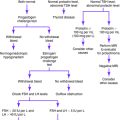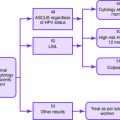Chapter 37 URINARY INCONTINENCE
Urinary incontinence is caused by disturbance in the storage function, and occasionally in the emptying function, of the lower urinary tract. A continent sphincter mechanism requires proper angulation between the urethra and the bladder, as well as proper positioning of the urethra so that increases in intra-abdominal pressure are effectively transmitted to the urethra.
The first goal of the evaluation of urinary incontinence is to identify reversible causes of incontinence so that effective treatments may be instituted. The second goal is to identify conditions that may necessitate special evaluation or referral to a urologist or urogynecologist. Once transient causes and indications for specialty evaluation or referral have been excluded, the third goal is to decide whether the patient’s symptoms are more suggestive of urge incontinence or stress incontinence. After this has been determined, treatment may be initiated accordingly. If the treatment is ineffective, specialty evaluation may be indicated.
Key Historical Features
✓ Degree of bother to the patient
✓ Use of pad to protect clothing from leaking urine
✓ Relation to medication treatments
✓ How often sleep is interrupted by the need to urinate
✓ Sensation of incomplete bladder emptying
✓ Frequency of bowel movements
✓ Splinting of the vagina or perineum during defecation
✓ Presence of fecal incontinence
Key Physical Findings
✓ General examination for mobility status
✓ Neurologic examination for cognitive status, upper motor neuron lesions such as multiple sclerosis or Parkinson disease, lower motor neuron lesions such as sacral-nerve root lesions; assessment of lumbosacral nerve roots by checking deep tendon reflexes, lower extremity strength, and sharp or dull sensation
✓ Cardiovascular and pulmonary examination to assess for causes of cough
✓ Abdominal examination for masses, diastasis recti abdominis, ascites, or organomegaly
✓ Pelvic examination for pelvic masses, organ prolapse, or vaginal atrophy (the levator ani muscle function can be evaluated by asking the patient to tighten her vaginal muscles and hold the contraction as long as possible); evaluation of the bulbocavernous and clitoral sacral reflexes; and evaluation for inflammation, infection, and atrophy
✓ Rectal examination to evaluate for sphincter tone, fecal impaction, rectal lesions, or the presence of occult blood
✓ Extremity examination for peripheral edema
✓ Urine leakage should be assessed with coughing or Valsalva maneuver in both the supine and standing position
Suggested Work-Up
| Urinalysis | To evaluate for urinary tract infection or diabetes-induced glycosuria |
| Urine culture | Not routinely indicated but possibly useful in identifying the causative organism of infections and in guiding antibiotic therapy |
| Assessment of postvoid residual volume by catheterization or ultrasonography | To detect urinary retention (<50 mL is normal; >200 mL is abnormal). |
| Cystometry | To measure bladder pressure during filling, which provides information about bladder capacity and the ability to inhibit detrusor contractions |
| Cystoscopy | Indicated for the evaluation of patients with incontinence who also have any of the following: hematuria or pyuria; irritative voiding symptoms such as frequency, urgency, and urge incontinence in the absence of reversible causes; bladder pain; recurrent cystitis; and suburethral mass |
| Also indicated when urodynamic testing fails to duplicate symptoms of urinary incontinence |
Additional Work-Up
| Cystometric testing | Indicated as part of the evaluation of more complex disorders of bladder filling and voiding, such as the presence of neurologic disease and other comorbid conditions (there is only limited data suggestive of its need in the routine evaluation of women with urinary incontinence) |
| Urodynamic testing | May be indicated when surgical treatment of stress incontinence is planned |
| Pressure-flow voiding studies, uroflowmetry, and electromyography of the anal sphincter | May be indicated for the assessment of complex and neurogenic causes of urinary incontinence and voiding disorders |
Culligan PJ, Heit M. Urinary incontinence in women: evaluation and management. Am Fam Physician. 2000;62:2433-2444.
Morantz CA. ACOG guidelines on urinary incontinence in women. Am Fam Physician. 2005;72:175.
Norton P, Brubaker L. Urinary incontinence in women. Lancet. 2006;367:57-67.
Wein AJ, Rackley RR. Overactive bladder: a better understanding of pathophysiology, diagnosis, and management. J Urol. 2006;175:S5-S10.
Weiss BD. Diagnostic evaluation of urinary incontinence in geriatric patients. Am Fam Physician. 1998;57:2675-2684.




